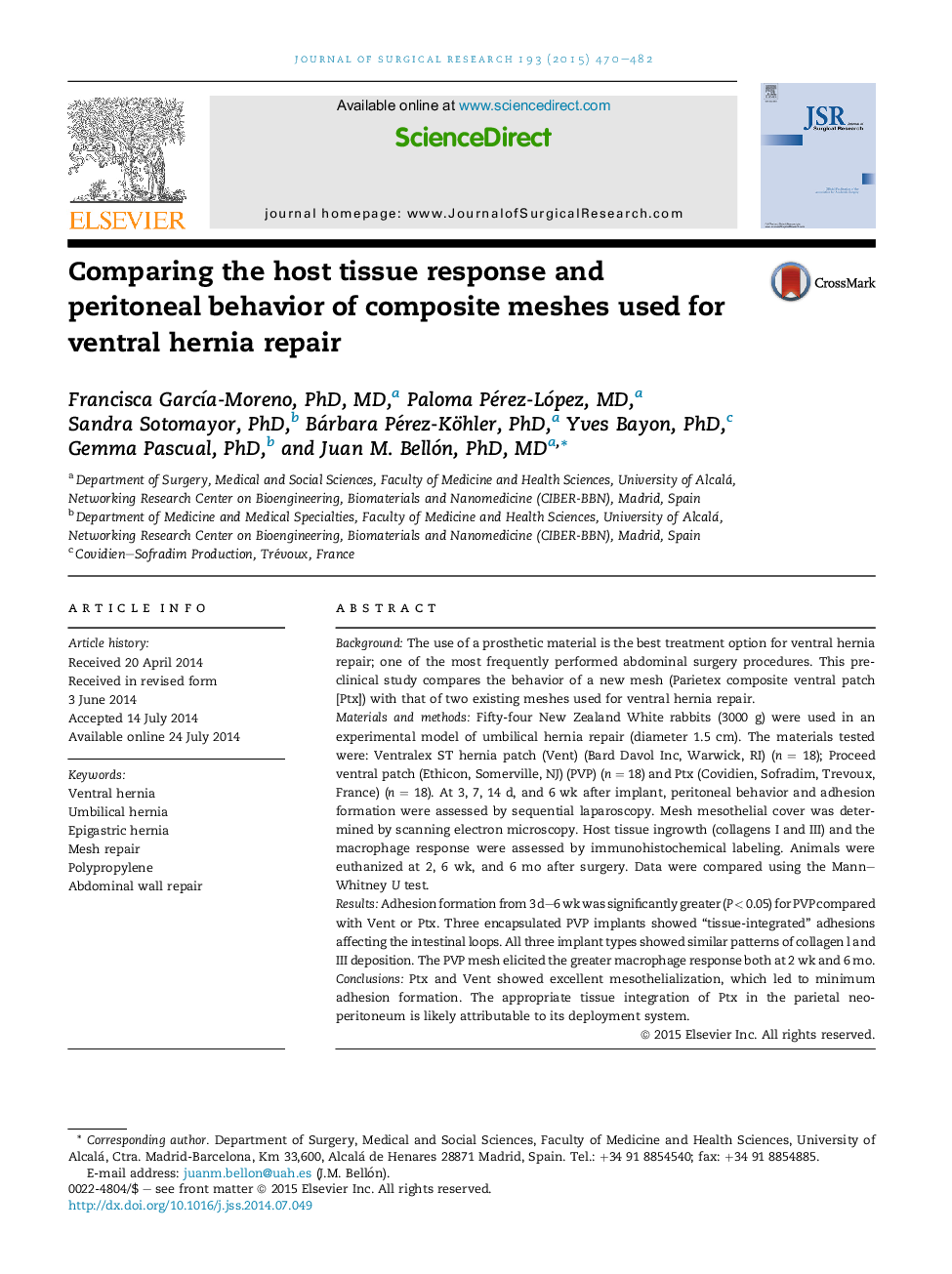| Article ID | Journal | Published Year | Pages | File Type |
|---|---|---|---|---|
| 6253805 | Journal of Surgical Research | 2015 | 13 Pages |
BackgroundThe use of a prosthetic material is the best treatment option for ventral hernia repair; one of the most frequently performed abdominal surgery procedures. This preclinical study compares the behavior of a new mesh (Parietex composite ventral patch [Ptx]) with that of two existing meshes used for ventral hernia repair.Materials and methodsFifty-four New Zealand White rabbits (3000 g) were used in an experimental model of umbilical hernia repair (diameter 1.5 cm). The materials tested were: Ventralex ST hernia patch (Vent) (Bard Davol Inc, Warwick, RI) (n = 18); Proceed ventral patch (Ethicon, Somerville, NJ) (PVP) (n = 18) and Ptx (Covidien, Sofradim, Trevoux, France) (n = 18). At 3, 7, 14 d, and 6 wk after implant, peritoneal behavior and adhesion formation were assessed by sequential laparoscopy. Mesh mesothelial cover was determined by scanning electron microscopy. Host tissue ingrowth (collagens I and III) and the macrophage response were assessed by immunohistochemical labeling. Animals were euthanized at 2, 6 wk, and 6 mo after surgery. Data were compared using the Mann-Whitney U test.ResultsAdhesion formation from 3 d-6 wk was significantly greater (P < 0.05) for PVP compared with Vent or Ptx. Three encapsulated PVP implants showed “tissue-integrated” adhesions affecting the intestinal loops. All three implant types showed similar patterns of collagen l and III deposition. The PVP mesh elicited the greater macrophage response both at 2 wk and 6 mo.ConclusionsPtx and Vent showed excellent mesothelialization, which led to minimum adhesion formation. The appropriate tissue integration of Ptx in the parietal neoperitoneum is likely attributable to its deployment system.
